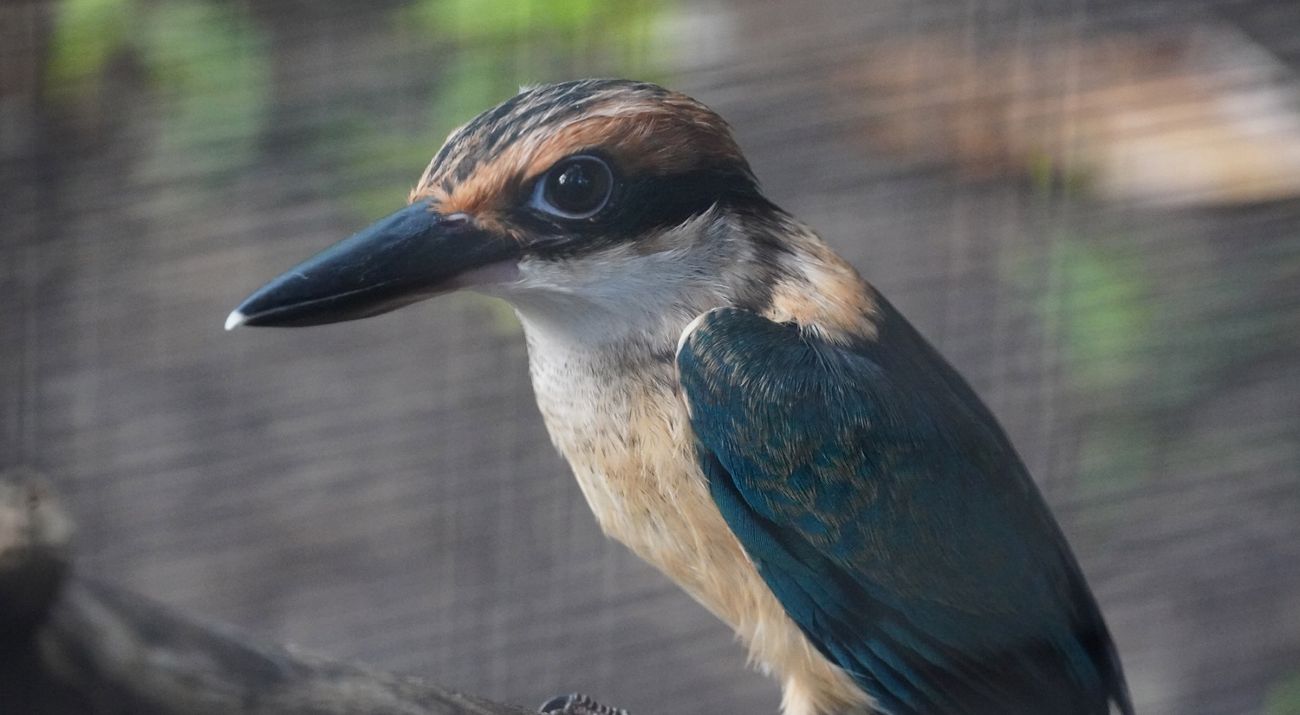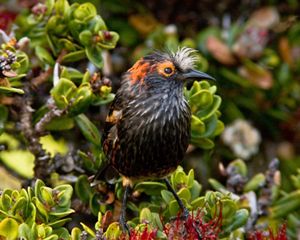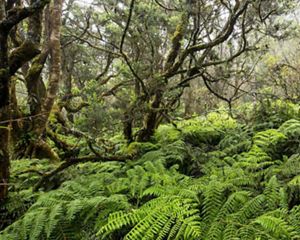Extinct-in-the wild sihek (Guam kingfisher) chicks arrive at TNC’s Palmyra Atoll preserve and research station
Media Contacts
-
Evelyn Wight
Senior Communications Manager
The Nature Conservancy
Phone: 808-587-6277
Email: ewight@tnc.org
Nine extinct-in-the wild sihek (also known as Guam kingfishers) arrived at their new home at The Nature Conservancy’s preserve and research station at Palmyra Atoll, 1,000 miles south of Hawai‘i, on August 28, 2024. The chicks—four females and five males—completed their historic 4,500 mile flight from Wichita, Kansas safely and are temporarily settled into aviaries within their new home.
“Palmyra Atoll is an ideal location for rewilding these magnificent birds,” says Alex Wegmann, TNC’s Lead Scientist for Island Resilience. “It is one of the healthiest land and ocean ecosystems on the planet, is free of invasive predators like rats, is carefully studied and monitored, and is fully protected as a national wildlife refuge and TNC preserve.”
TNC scientists will help the chicks acclimatise and will care for and monitor their growth until they are ready to be released into the wild. The sapphire and cinnamon-colored birds will wear tiny trackers so they can be monitored as they fly around Palmyra and establish nests.
“Extensive research shows Palmyra’s forests are ideal for the sihek and that introducing it will have minimal effects on native wildlife there,” adds Wegmann.
Sihek, as the birds are known by the indigenous CHamoru* people, once flourished in Guam, but the introduction of the brown tree snake in the 1940s decimated sihek and other native bird populations. While the sihek has survived in 24 zoos and aviaries since the 1980s, they don’t breed enthusiastically in captivity and need to live in the wild to flourish. These nine chicks will kickstart the first wild population of sihek in almost 40 years. The long-term goal is to bring sihek back to their island home in Guam.
Quote: Ulalia Woodside Lee
This project demonstrates that our nearly 25-year investment in conservation and scientific research at Palmyra Atoll is providing a significant return for individual species like the sihek, and for biodiversity more broadly,
The chicks were hatched in various zoos and facilities and then all nine birds were hand-reared in a quarantined facility at Sedgwick County Zoo. They received round-the-clock care and feeding as they grew from hatchlings weighing no more than a pencil to maturing, flighted birds ready for rewilding. Additional chicks will be sent to Palmyra annually until a target number of breeding pairs are successfully established in the wild.
“We still have some years to go until sihek establish a self-sustaining population, but this is an amazing milestone, and other success stories show us that it is possible,” says Caitlin Andrews, PhD, Bird Conservation Scientist with TNC and Zoological Society of London.
This work is being done by the Sihek Recovery Program, a global collaborative of conservationists dedicated to reestablishing the sihek in the wild for return to its home in Guam. The Program includes partners from the following organizations: U.S. Fish & Wildlife Service (USFWS), Guam Dept. of Agriculture’s Division of Aquatic & Wildlife Resources (DOAG), Zoological Society of London (ZSL), The Nature Conservancy (TNC), Sedgwick County Zoo, Association of Zoos and Aquariums (AZA), and the International Union for the Conservation of Nature (IUCN).
“Today, I stand with our beloved sihek—Guahan’s kingfisher—who, like us, carry the spirit of Guahan,” says Yolonda Topasna, DOAG Program Coordinator as well as a member of Guam’s indigenous CHamoru community. “As they journey to Palmyra Atoll, I feel their resilience reflecting our own. We must bring them back, for their return is vital to restoring our island’s balance and thriving together.”
*The CHamoru name is spelled with a capitalized H. Guam is spelled Guåhan in CHamoru.
The Nature Conservancy is a global conservation organization dedicated to conserving the lands and waters on which all life depends. Guided by science, we create innovative, on-the-ground solutions to our world’s toughest challenges so that nature and people can thrive together. We are tackling climate change, conserving lands, waters and oceans at an unprecedented scale, providing food and water sustainably and helping make cities more resilient. The Nature Conservancy is working to make a lasting difference around the world in 81 countries and territories (40 by direct conservation impact and 41 through partners) through a collaborative approach that engages local communities, governments, the private sector, and other partners. To learn more, visit nature.org or follow @nature_press on X.



